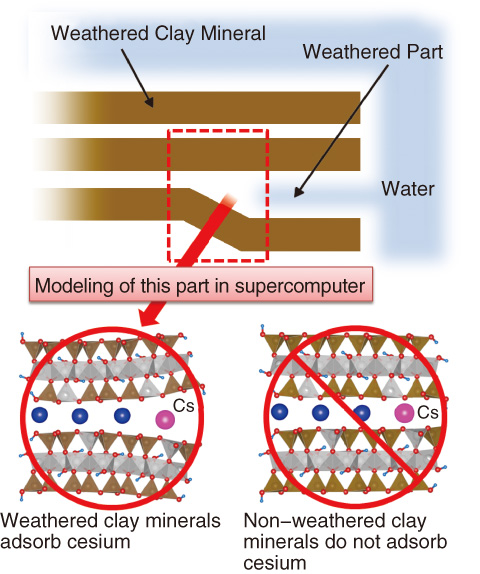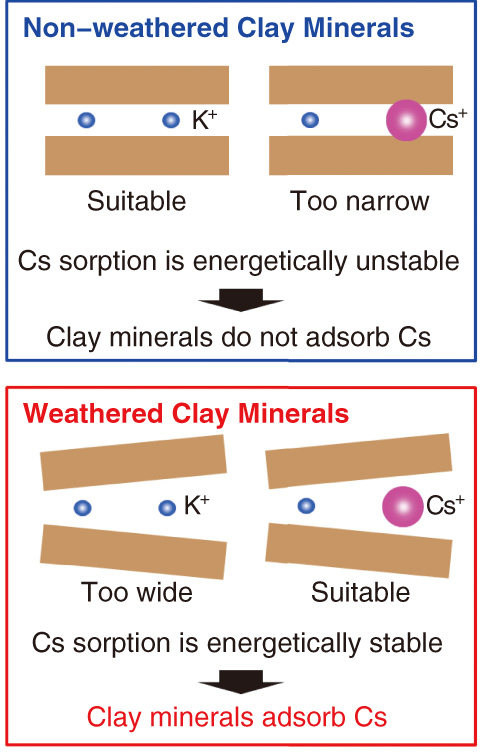
Fig.1-11 Schematic of clay mineral and model of its weathered part

Fig.1-12 Schematic of adsorption mechanism of cesium to weathered clay minerals
A large amount of radioisotopes was released into the environment by the accident at the TEPCO’s Fukushima Daiichi NPS after the large earthquake and tsunami on March 11, 2011. The government conducted large-scale decontamination in the Fukushima area, which produced a large amount of waste. The handling of such a large amount of waste became a new serious problem because it is not easy to prepare storage places for it. To solve this problem, it is necessary to reduce the volume of the waste. However, standard technology for such reduction has not been developed. One reason is the lack of knowledge about the microscopic mechanism of adsorption. Weathered clay minerals are known to adsorb cesium, but no one knows the mechanism. To identify the mechanism, we performed first-principles calculations on the adsorption reaction of cesium to clay minerals.
First, we made a model of the weathered clay mineral in the supercomputers at the Japan Atomic Energy Agency and calculated the energy difference between the mineral before and after adsorption (Fig.1-11). As a result, we found that only weathered clay minerals adsorb cesium. In contrast, non-weathered ones do not exhibit adsorption. Further calculations revealed the adsorption mechanism (Fig.1-12). Non-weathered clay minerals have pockets with sizes suitable for the potassium ion’s radius. On the other hand, when clay minerals are weathered, they have wider pockets that are suitable for cesium ions, whose radius is larger than that of potassium ions.
We revealed the adsorption mechanism of cesium to clay minerals by first-principles calculations. We hope to develop a simulation technique for desorption of radioactive cesium from clay minerals on the basis of this knowledge of the adsorption mechanics and contribute to volume reduction of the waste.